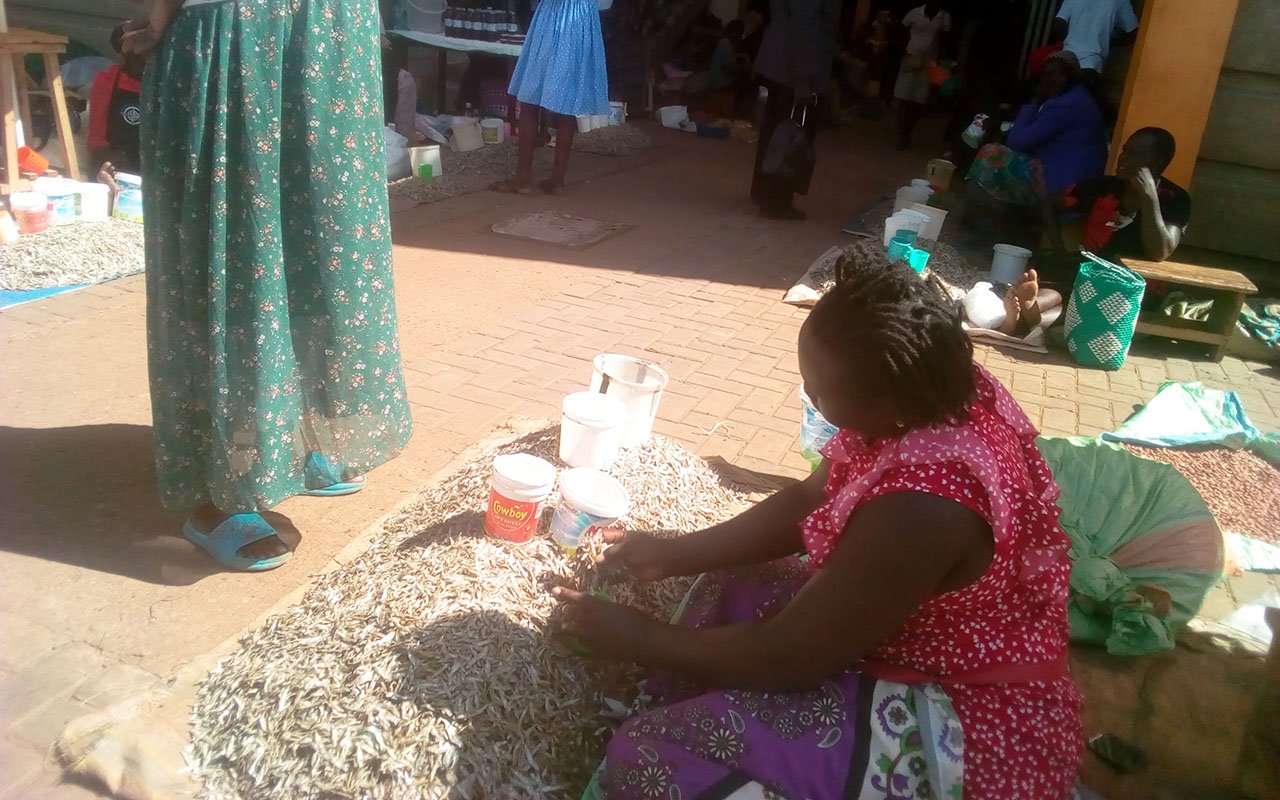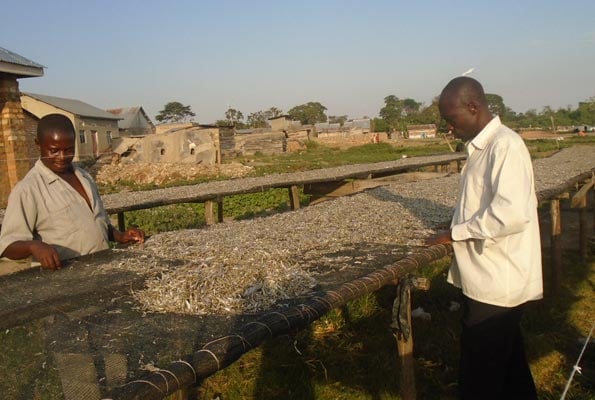Prime
Mukene traders feel the pain as new govt policy begins to bite

Women sell mukene (Silverfish) at Kiyindi Landing Site in Buikwe District on February 24, 2024. PHOTO/DANIEL M SSENFUMA
What you need to know:
- In the Island district of Kalangala, 1,500 of the 3,000 boats that were being used in catching mukene are currently operating at 12 landing sites, according to Mr Jackson Baguma, the district production officer.
Several fishermen dealing in mukene (Silverfish) have in the last couple of months deserted landing sites and islands on Lake Victoria to protest the government’s new policy on the business.
In a February 20 ,2024 statement, the State Minister for Fisheries, Ms Hellen Adoa, announced that the government had banned the use of ‘‘hurry-up’’ fishing method in catching mukene and recommended the use of chota-chota (scoop net method) on all water bodies across the country.
Ms Adoa explained that the use of ‘‘hurry-up’’ method is destructive because it indiscriminately catches all fish species, including young Nile Perch and in large numbers, thus depleting the lakes.
However, the implementation to enforce the chota-chota fishing method was misinterpreted by a section of fishermen who thought it was a total ban of mukene. This has forced many fishermen to abandon mukene fishing business or have relocated to neigbouring Tanzania where the banned fishing method is still thriving.

A Chota-chota (scoopnet) fishing gear. PHOTO/DENIS EDEMA
In the Island district of Kalangala, 1,500 of the 3,000 boats that were being used in catching mukene are currently operating at 12 landing sites, according to Mr Jackson Baguma, the district production officer.
“The exit of those people has caused scarcity of mukene, which explains the current increase in prices. But this is temporary because many species will regenerate and we get more fish in the coming months,” he told Monitor on June 3.
At Lwaazi Landing Site in Bubeke Sub-county, for example, boats used to catch mukene decreased from 300 to only 10. The area, which had over 5,000 people dealing in the trade, at least 4,000 have since left, according to Mr Charles Kalemba, the sub-county chairperson.
Currently, one kilogramme of mukene costs between Shs12,000 and 15,000 ,up from Shs5,000 six months ago.
In Mazinga Sub-county, which is bordering Tanzania, Mr Sunday Gerald Kayita, the sub-county chairperson, revealed that more than 80 percent of fishermen who used to deal in mukene business crossed to Tanzania with their boats.
“20 percent of boats that remained are rotting at landing sites. The business is completely down and very soon we may fail to have council sittings over failure to pay allowances to councillors because the mukene business was a big contributor to our tax envelope,” he said.
Mr Kayita said a lot of the mukene currently sold in Ugandan markets is imported from Tanzania.
Mr Rajab Semakula, the Kalangala District chairperson, said most of the people who were dealing in mukene were not Ugandan nationals who had also set up other small businesses like eateries, bars and shops, which have since closed following their exit.
“Those nationals from Tanzania, Rwanda, Burundi were making a lot of money –they could send a portion of it back home and invest the rest here,” said
Mr Semakula said the district has been earning Shs8.4 million from issuing landing fee tax monthly but this has since reduced to Shs3 million due to continuous exodus of mukene dealers from the district .
“The positive development with this ban is that the business is now in the hands of Ugandans and with this, we are optimistic that revenue collections will go up,” the district chairperson said.
Mr Emmanuel Mange ,the chairperson of the Nile Landing Site in Njeru Municipality in Buikwe District, explained that the chota-chota method is only applicable on some lakes with slow and very shallow waters, but not in River Nile waters where the water flows at high speed. “That is the reason why mukene fishers here had to suspend operations because the new proposed fishing method cannot work here,” he said.
Mr Aaron Afugan , the chairperson of Kikondo Landing Site in Njeru Municipality, Buikwe District, said about 1,000 people have been rendered jobless following the ban on ‘‘hurry-up’’ method.
“Fishers here have been using the ‘‘hurry-up’’ method for catching mukene now that it was banned, they returned to their villages,” he said .
Mr Ismail Anguyo, 35, a mukene fisherman, said he used to manage three boats with seven workers. However, ever since the ban was announced, the boats are tied up at Kikondo Landing Site.
Fishermen under their umbrella body, the Association of Fishermen and Lake Users (AFALU), have since petitioned the government to push for a uniform policy on catching mukene throughout the East African Community.
“Having a common policy on mukene will increase fish stocks in Lake Victoria and other water bodies and the fishermen will also earn more money,” Mr Siraje Mawanda, the AFALU spokesperson said.
Mr Godfrey Ssenyonga Kambugu, the AFALU national chairperson, said much as the mukene fishers are deserting fishing villages, the government should continue implementing the new policy.
“We are the ones who urged the government to ban the ‘‘hurry-up’’ method after our research revealed that all young fish species were dying in the process of catching mukene,” he said.
He also urged the fishers to embrace it .
In Uganda, small fish species contribute between 60 percent and 70 percent of the total fish catch on lakes Victoria, Albert and Kyoga.
According to the National Fisheries Resources Research Institute (NaFRRI), small fish species contribute to the national economy and employ more than 60 percent of the total lake biomass and support the animal feed industry.
NaFRRI said fishers catch between 300 tonnes and 400 tonnes of mukene from Lake Victoria annually.
Initially, many people were not eating mukene as they considered it as fish for the poor and was mainly used by farmers who mix it in animal feeds. But in the changing fortunes of water bodies, many Ugandans have switched from eating the biggest fish to eating the tiny mukene.
In local markets across the country, unprocessed mukene is sold between Shs500 and Shs10,000 (or more), depending on the quantity.
About scoopnets
Scoopnets are small hand operated devices formed like bagnets and used to scoop small fish and other prey out of water. Originally they were made of wood-like flat baskets but are now bags made of netting materials.
Source:Food and Agriculture Organisation
Compiled by Al Mahdi Ssenkabirwa, David Sekayinga &Denis Edema
[email protected]




